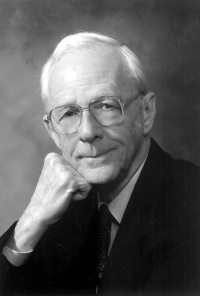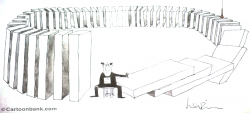Difference between revisions of "System Dynamics"
| Line 1: | Line 1: | ||
| + | |||
| + | |||
*'''The Essay topic''': System Dynamics | *'''The Essay topic''': System Dynamics | ||
*'''Class''':[http://isis.vse.cz/katalog/syllabus.pl?predmet=95726;zpet=..%2Fpracoviste%2Fpredmety.pl%3Fid%3D64%2Clang%3Dcz;jazyk=1;lang=sk 4IT496 Simulation of Systems] (WS 2015/2016) <ref>ŠALAMON, Tomáš. Design of agent-based models: developing computer simulations for a better understanding of social processes. Řepín-Živonín: Tomáš Bruckner, 2011. ISBN 978-809-0466-111. </ref> | *'''Class''':[http://isis.vse.cz/katalog/syllabus.pl?predmet=95726;zpet=..%2Fpracoviste%2Fpredmety.pl%3Fid%3D64%2Clang%3Dcz;jazyk=1;lang=sk 4IT496 Simulation of Systems] (WS 2015/2016) <ref>ŠALAMON, Tomáš. Design of agent-based models: developing computer simulations for a better understanding of social processes. Řepín-Živonín: Tomáš Bruckner, 2011. ISBN 978-809-0466-111. </ref> | ||
*'''Author''': Dinara Mansurova | *'''Author''': Dinara Mansurova | ||
| − | < | + | <blockquote style="text-align:right;"> |
| − | < | + | ''“An ocean traveler has even more vividly the impression that the ocean is made of waves than that it is made of water.” '' |
| − | < | + | <br>'''''― Arthur Stanley Eddington''''' |
| + | <span style=" font-size: 11px; align:right;">Gifford Lecture at the University of Edinburgh (Mar 1927). In The Nature of the Physical World (1929, reprint 2005), 242.</span></blockquote> | ||
| + | |||
| + | {| class="wikitable" align=right width="200" style="margin-left: 1em; margin-right: 2em;" | ||
| + | ! scope="col" width="30px" |Jay Wright Forrester | ||
| + | |- | ||
| + | | [[File:Jay_W_Forrester.jpg|thumb|center|200 px|Jay Wright Forrester]] | ||
| + | |- | ||
| + | | style="padding-left: 1em; padding-right: 2em;" | '''Jay W. Forrester''' works as the Professor Emeritus of Management in System Dynamics at the MIT Sloan School of Management. He is considered as a father of System Dynamics and inventor of random-access memory. | ||
| + | |||
| + | He has been recognized with numerous awards: ''Notable awards IEEE Medal of Honor (1972), Howard N. Potts Medal, National Medal of Technology and Innovation (1989), Computer History Museum Fellow (1995)''. <ref name="Jay W. Forrester"> [http://mitsloan.mit.edu/faculty/detail.php?in_spseqno=41467 MIT Sloan Management Faculty&Research]</ref> | ||
| + | |} | ||
'''System dynamics''' is a perspective and set of conceptual tools that enable us to understand the structure and dynamics of complex systems. System dynamics is also a rigorous modeling method that enables us to build formal computer simulations of complex systems and use them to design more effective policies and organizations. Together, these tools allow us to create management flight simulators-microworlds where space and time can be compressed and slowed so we can experience the long-term side effects of decisions, speed learning, develop our understanding of complex systems, and design structures and strategies for greater success.<ref> STERMAN, John. Business Dynamics: Systems Thinking and Modeling for a Complex World</ref> | '''System dynamics''' is a perspective and set of conceptual tools that enable us to understand the structure and dynamics of complex systems. System dynamics is also a rigorous modeling method that enables us to build formal computer simulations of complex systems and use them to design more effective policies and organizations. Together, these tools allow us to create management flight simulators-microworlds where space and time can be compressed and slowed so we can experience the long-term side effects of decisions, speed learning, develop our understanding of complex systems, and design structures and strategies for greater success.<ref> STERMAN, John. Business Dynamics: Systems Thinking and Modeling for a Complex World</ref> | ||
=Overview= | =Overview= | ||
| − | [http:// | + | Before introducing the world of system dynamics, we should understand what we mean by the words ''"system"'' and ''"dynamics"''. '''System''' is a very common word, which is used in a lot of different environments. It is an interconnected series of pieces that work together to achieve some objective. And term '''dynamics''' is reffered to the active and changing component of the system. As a whole, system dynamics study how each part of system interact with other pieces and how they change in a certain period of time. |
| + | |||
| + | The question is why do we need system dynamics and system thinking. And the answer is not simply that world is changing faster and faster and things are accelerating. Everybody knows that. It’s despite all the tools and methods that we’ve got, all the analytic power and our cleverness, things are getting harder and harder. And more and more of the policies that we implement are failing to solve the pressing challenges that we face. <ref>[http://ocw.mit.edu/courses/sloan-school-of-management/15-871-introduction-to-system-dynamics-fall-2013/ STERMAN, John. MIT 15.871 Introduction to System Dynamics, Fall 2013]</ref> | ||
| + | |||
| + | MIT Professor John Sterman provides a very memorizable example of sytem dynamics and system thinking in his Open MIT course. By this example he is trying to describe the concept of the system dynamics that looks at a system as a whole in three picrutes. | ||
| + | |||
| + | {| class="wikitable" width="650" style="margin-left: 1em; margin-right: 1em;" | ||
| + | |+ System thinking example | ||
| + | |- | ||
| + | | style="padding-left: 1em; padding-right: 1em;" | [[File:manager-1.png|thumb|left|200 px|Picture 1]] | ||
| + | | style="padding-left: 1em; padding-right: 1em;" |[[File:manager-2.png|thumb|left|200 px|Picture 2]] | ||
| + | | style="padding-left: 1em; padding-right: 1em;" |[[File:manager-3.png|thumb|left|250 px|Picture 3]] | ||
| + | |- | ||
| + | | On the first picture office worker is depicted. This poor guy is complitely squeezed by pressures on both sides. He can not breath. Claustrophobic. And what you are asked to do as a manager is to be decisive. You have to make decisions. | ||
| + | | Consequently, what manager did? He made a decision. Things are much better for him right now. He can breath more easily, see out to the side. Refief. | ||
| + | | But as you may suspect, there could be some unanticipated side effects. | ||
| + | |} | ||
| + | |||
=History= | =History= | ||
| + | System dynamics as an independent discipline was invented in 1950s in MIT by Jay W. Forrester. | ||
| + | |||
=Basic Concepts= | =Basic Concepts= | ||
| + | ==Casual-loop diagrams== | ||
| + | ==Stock-flow diagrams== | ||
=Application= | =Application= | ||
| − | =Excercises= | + | =Excercises and Questions for revision= |
| + | 1. Take a look at the system thinking example once again. Why does this phenomenon happen and why don't people learn? | ||
=See also= | =See also= | ||
=References= | =References= | ||
Revision as of 01:19, 23 January 2016
- The Essay topic: System Dynamics
- Class:4IT496 Simulation of Systems (WS 2015/2016) [1]
- Author: Dinara Mansurova
“An ocean traveler has even more vividly the impression that the ocean is made of waves than that it is made of water.”
― Arthur Stanley EddingtonGifford Lecture at the University of Edinburgh (Mar 1927). In The Nature of the Physical World (1929, reprint 2005), 242.
| Jay Wright Forrester |
|---|
| Jay W. Forrester works as the Professor Emeritus of Management in System Dynamics at the MIT Sloan School of Management. He is considered as a father of System Dynamics and inventor of random-access memory.
He has been recognized with numerous awards: Notable awards IEEE Medal of Honor (1972), Howard N. Potts Medal, National Medal of Technology and Innovation (1989), Computer History Museum Fellow (1995). [2] |
System dynamics is a perspective and set of conceptual tools that enable us to understand the structure and dynamics of complex systems. System dynamics is also a rigorous modeling method that enables us to build formal computer simulations of complex systems and use them to design more effective policies and organizations. Together, these tools allow us to create management flight simulators-microworlds where space and time can be compressed and slowed so we can experience the long-term side effects of decisions, speed learning, develop our understanding of complex systems, and design structures and strategies for greater success.[3]
Contents
Overview
Before introducing the world of system dynamics, we should understand what we mean by the words "system" and "dynamics". System is a very common word, which is used in a lot of different environments. It is an interconnected series of pieces that work together to achieve some objective. And term dynamics is reffered to the active and changing component of the system. As a whole, system dynamics study how each part of system interact with other pieces and how they change in a certain period of time.
The question is why do we need system dynamics and system thinking. And the answer is not simply that world is changing faster and faster and things are accelerating. Everybody knows that. It’s despite all the tools and methods that we’ve got, all the analytic power and our cleverness, things are getting harder and harder. And more and more of the policies that we implement are failing to solve the pressing challenges that we face. [4]
MIT Professor John Sterman provides a very memorizable example of sytem dynamics and system thinking in his Open MIT course. By this example he is trying to describe the concept of the system dynamics that looks at a system as a whole in three picrutes.
| On the first picture office worker is depicted. This poor guy is complitely squeezed by pressures on both sides. He can not breath. Claustrophobic. And what you are asked to do as a manager is to be decisive. You have to make decisions. | Consequently, what manager did? He made a decision. Things are much better for him right now. He can breath more easily, see out to the side. Refief. | But as you may suspect, there could be some unanticipated side effects. |
History
System dynamics as an independent discipline was invented in 1950s in MIT by Jay W. Forrester.
Basic Concepts
Casual-loop diagrams
Stock-flow diagrams
Application
Excercises and Questions for revision
1. Take a look at the system thinking example once again. Why does this phenomenon happen and why don't people learn?
See also
References
- ↑ ŠALAMON, Tomáš. Design of agent-based models: developing computer simulations for a better understanding of social processes. Řepín-Živonín: Tomáš Bruckner, 2011. ISBN 978-809-0466-111.
- ↑ MIT Sloan Management Faculty&Research
- ↑ STERMAN, John. Business Dynamics: Systems Thinking and Modeling for a Complex World
- ↑ STERMAN, John. MIT 15.871 Introduction to System Dynamics, Fall 2013



